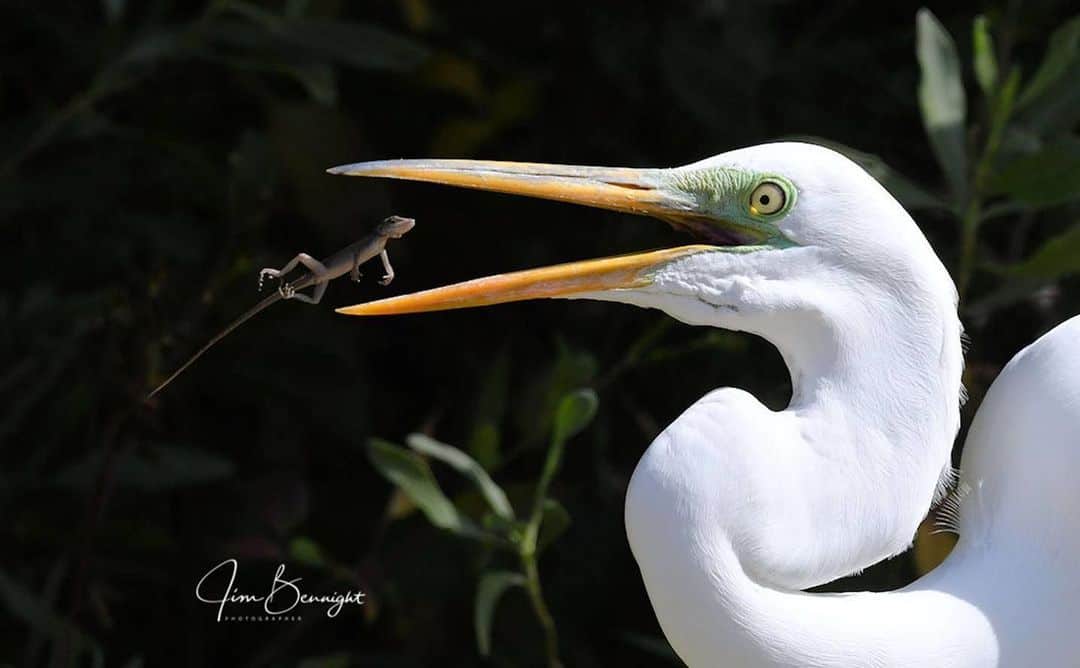A penguin’s body is built for swimming. It has a big head, a short neck, a long body, and a short, wedge-shaped tail.
Unlike most birds, penguins have short legs and webbed feet positioned far back on their body to help them waddle.
But people often wonder if penguins have knees due to their unique appearance.
The answer is yes, penguins do have knees. The bones in a penguin’s leg include knees.
However, the knees of penguins are not easy to see because a lot of the upper leg bones are covered by thick feathers.
Continue reading to learn more interesting facts about penguin legs, hips, knees, and ankles.
Do Penguins Have Knees?

Illustration of a Penguin’s Skeleton Showing Hip, Leg, Knee, and Ankle Bones Penguins possess knees that connect their femur to their tibia and fibula.
Yet, because these knees are close to their body and covered with thick feathers, it’s not easy to see them just by looking at the penguins.
Their streamlined body shape, optimized for swimming and diving, also contributes to the challenge of spotting their knees.
Additionally, their bones are denser compared to those of other birds that fly. This dense bone structure aids in diving underwater rather than flying in the air.
This density prevents them from being too buoyant, allowing them to dive more effectively.
What Are Penguins’ Knees Used For?
Penguin Swimming Underwater Penguins utilize their knees and feet for propulsion when they slide on their bellies.
They also rely on their knees for movement both in water and on land. Their knees facilitate shuffling on snow-covered shores and sliding on snowy slopes.
The tucked position of penguins’ knees gives them the appearance of having short legs. This adaptation minimizes drag during swimming and enhances their diving speed.
These birds, unable to fly, also employ their knees for incubating eggs. They hold the eggs close to their knees and balance them on their toes, which helps maintain warmth for the eggs, especially in cold conditions.
Also Read: Inside of Penguins Mouth
Do Penguins Have Kneecaps?
All birds have knees, but not all of them have kneecaps. Penguins are one of the birds that have both knees and kneecaps, although their kneecaps, known as patellae, have a different shape compared to ours.
Penguin kneecaps are not flat like ours; instead, they are more cube-shaped. These patellae are enclosed within tendons and aid in the bending of the knee joint.
The Structure of Penguin Legs and Knees
At a glance, penguin legs might seem short and stubby. Their legs are mostly covered by thick feathers, and their distinctive waddling walk has led to the misconception that they lack knees. However, like humans, penguins are bipeds, having similar major leg bones to ours. So, what exactly do penguin legs look like?
Continue reading to discover the basic structure of a penguin’s leg.
Upper Leg
Penguins hold their upper legs at an almost 90-degree angle to their lower legs. The femur, which is the thigh bone, is relatively short and attaches to the hip joint of the pelvis. These bones are heavier compared to those of flying birds. This density benefits swimming as it reduces buoyancy. Penguins don’t need the hollow and lightweight bones of flying birds.
Knee
Penguins keep their knees bent since they hold their lower legs vertically. Each knee joint includes a kneecap. Penguin knees are positioned well above the tips of their flippers, which might be higher than expected.
Lower Leg
The penguin’s lower leg contains the tibiotarsus, equivalent to our shinbone. These shinbones are the longest in their legs, which is why their knees are higher in their bodies.
Ankle
Penguins have sturdy, sizeable ankles. This joint is sometimes confused with the knee in other bird species and is quite noticeable in penguins. The key bone in a penguin’s ankle is the tarsometatarsus, which is much shorter and wider compared to other birds.
Foot
Penguins possess large webbed feet with sizable claws. Initially, it might seem like they have only three toes, but upon closer inspection, you’ll notice a tiny first toe called a hallux.
Their expansive feet are ideal for maneuvering in water and also provide cushioning and traction when walking on land. Penguin feet contribute to stability for their relatively heavy and upright bodies.
Why Do Penguins Waddle?
Penguins have evolved to be exceptional swimmers, but this specialization comes with limitations on their land mobility. To cope with this trade-off, penguins have developed a unique way of moving forward on land with their legs that have a limited range of motion.
Waddling serves penguins well since they don’t need to be fast on land; their prey resides underwater. This manner of movement also conserves energy, which is crucial for a bird that walks with inefficiency.
Studies suggest that penguins expend about twice the amount of energy while walking compared to other land animals. Yet, researchers from the University of Colorado have discovered that this inefficiency stems from penguins’ short legs rather than their distinctive waddle.
How Fast Can Penguins Waddle?
Penguins can waddle at speeds of up to approximately 2.5 miles per hour (4 km/h). Fortunately, most penguin species do not encounter many land predators. However, these flightless birds excel in swimming, reaching impressive speeds of over 20 miles per hour (32 km/h).
While penguins’ walking speed is modest, they can cover substantial distances when required. Continue reading to find out how far penguins can waddle.
How Far Can Penguins Waddle?
Despite their seemingly awkward gait on land, penguins are capable of waddling surprisingly long distances.
The Emperor Penguin (Aptenodytes forsteri), for example, can journey an impressive 70 miles (112 km) or more to reach its winter breeding grounds on the expansive ice sheets of Antarctica.
Even the Adelie Penguin (Pygoscelis adeliae), much smaller than the Emperor, has been observed traveling over 40 miles (64 km) across land.
Can Penguins Run?
Penguins are capable of running, although their speed tops out at less than three miles per hour. However, on snow or ice, they can achieve a slightly higher pace by sliding or ‘tobogganing.’ Penguins accomplish this by lying flat on their bellies and propelling themselves forward using their feet.
Do Penguins Have Hips?
Penguins do have hips. Hips are the joints where their thigh bones (femurs) meet their pelvic bones.
However, penguins have unique hips. Unlike most animals, their hips are located very close to their tails due to the positioning of their knees higher up on their bodies.
Do Penguins Have Ankles?
Penguins, like all other birds, do have ankles. However, their ankles are distinct from those of other species.
Their ankles are formed by the fusion of the bones in their lower legs and the bones in their feet. These ankles point backward, forming their heel.
Fascinating Facts About Penguins
Beyond their concealed knees and webbed feet, there are various intriguing facts you might not be aware of regarding penguins. Here are some of them:
- Most penguins display countershading camouflage—black and white plumage that aids them in hiding from predators.
- Unlike birds that can fly, penguins are flightless. Instead of wings, they possess flippers that enable them to swim proficiently.
- Penguins have an incredibly streamlined body design, allowing them to swim with enhanced efficiency.
- The world is home to around 17 to 19 penguin species, spread across regions from Australia to Africa.
- Among seabirds, penguins are highly threatened, with approximately two-thirds of their species categorized as endangered on the IUCN Red List.
- Penguins are ocean-dwelling birds, spending about 75 percent of their lives in water and the remainder on ice or land.



![35 Most Beautiful Birds in the World [Pretty Birds]](https://birdsology.com/wp-content/uploads/2023/05/27413009815_b8357b0f0e_b-600x400.jpg)


